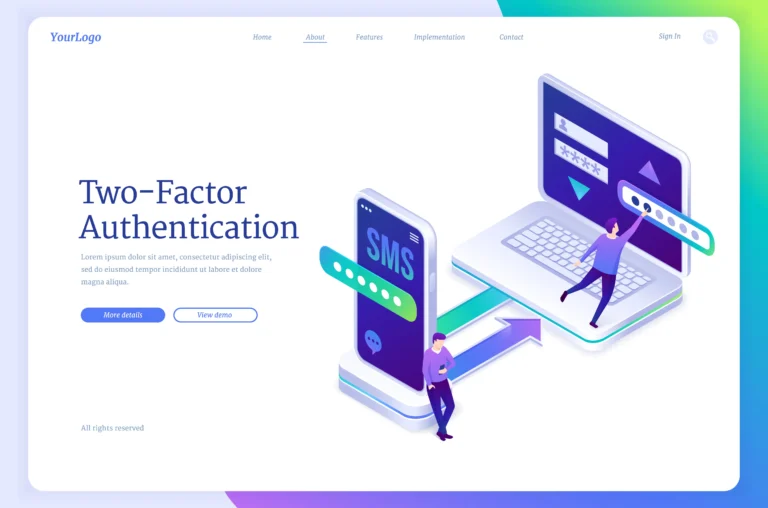Phishing Attacks: How to Avoid Blank-Image Attacks in 2023
Phishing Attacks are one of the most common attacks in the world, with hackers trying to steal personal information from individuals by pretending to be trustworthy sources. In order to avoid becoming a victim of a blank-image phishing attack in 2023, be aware of the warning signs and be sure to never give out personal information or login credentials to anyone you don’t know.
How to Identify Phishing Attacks?
If you notice any of the following signs, be sure to avoid giving out personal information or login credentials to anyone you don’t know:

- An email that looks like it’s from a legitimate company, but has a suspicious domain name or sender address.
- A Strange Style or Greeting
- A URL that is mismatched or suspect.
- Grammatical and Spelling Mistakes
- There is a snag.
- Errors in Email Addresses, Links, and Domain Names
- Threats or a Sense of Immediacy
- The email contains implausible threats or demands.
- Unusual Attachments
- Out of the Ordinary Request
- Brief and to the Point
- The Recipient Did Not Start the Conversation
- Demand for credentials, payment information, or other personal information
Blank-Image Attack in a few words
A novel phishing tactic was discovered. An article revealing a new approach in which hackers conceal dangerous content in a blank image within an HTML attachment in phishing emails purporting to be from DocuSign was published by Avanan, a Check Point Software business.

A link and an HTML attachment are included in the first email of the campaign, which purports to be from DocuSign. The phishing email suggests that the recipient peruse and sign a document that is described as “remittance advice.”
The attachment, however, is not a clean, legitimate webpage; in contrast, clicking the “View Completed Document” button goes to one. The blank image attack starts when the document is opened. The attachment contains a Javascript-encoded SVG image that is Base64-encoded and sends the user to a malicious link.
The email can avoid link analysis and security scanners by concealing the virus in the empty picture attachment, which also contains a valid link and hides the email’s true purpose. Researchers recommend against opening HTML-containing emails and propose banning all HTML attachments, treating them as executables.
This essentially amounts to a new version of current attack techniques, as noted by Jeremy Fuchs, an Avanan Cybersecurity Researcher/Analyst. “With this technology, hackers can target almost everyone,” he claims. “Like other attacks, the goal here is to extract something from the victim. A potential target is any user who has access to money or credentials.
“Using Base64 gimmicks and HTML attachments are not new concepts. The use of an empty picture that contains active content—a javascript image—and redirects to a malicious URL is novel and original. In essence, it is employing a malicious image with live content that is hidden from view by antivirus software like VirusTotal.”

Scammers constantly change, therefore they will inevitably develop fresh strategies like this one to fool defenders until defense mechanisms can keep up. The finest and last line of defense is a knowledgeable, attentive user. By teaching your staff to spot social engineering assaults, even cutting-edge ones like the blank-image phish hook, new-school security awareness training adds a critical layer of security to your company’s defenses.
What are the legal issues needed to know?
Data protection and cyber security are currently popular topics and for good reason. Cyber risks to banks and other financial organizations are always changing. The potential repercussions of a significant cyber security breach can be enormous due to the sophistication of the threat and the methods used to carry out cyberattacks.
Ninety percent of major organizations experienced a security breach in the year prior, according to the Department for Business and Skills’ 2015 Information Security Breaches survey. A large organization’s worst single breach typically costs between eye-watering £1.46 million and £3.14 million. Consumer trust is lost as a result of data security breaches, which may immediately affect sales. However, a security breach will also incur expenditures for business interruption, compensation, and regulatory fines.

The research also discovered that the type of cyberattacks that organizations are subject to has changed, with fewer denial-of-service assaults and a rise in attacks employing malicious software. Perhaps unexpectedly given the increased awareness of cyber security dangers, accidental human error—up from 31% the year before to 50%—was named as the main reason for the worst security breaches.
In light of this, lawmakers are putting up new legal criteria for both the protection of personal data and the management of cyber security risk. The anticipated changes to regulatory requirements must be planned for by organizations now, along with measures to prevent cyber security breaches.
What is Legal compliance that meets the real world?
Understanding legal responsibilities is crucial for organizations when deciding on cyber security goals. However, it is equally crucial to make sure that the methods of adhering to legal responsibilities are in line with business goals and areas of actual risk; cyber security management should not be a compliance exercise that consists of checking off boxes.

The General Data Protection Regulation of 1998, which mandates that organizations take “necessary technological and organizational measures” to protect personal data from unauthorized access, damage, loss, or disclosure, is the primary source of legal requirements for cyber security in the UK. Given the potential harm to people in the case of a data security breach and the nature of the data, such measures must offer a sufficient level of protection. The Act additionally states that organizations must take into account both the expenses of implementation and the status of technological advancement when selecting which security measures to apply.
In actuality, this entails that the legal responsibilities allow some latitude to do a risk assessment and customize security measures to guard against areas of genuine risk. It is crucial to remember that the Data Protection Act only mandates that businesses take all necessary precautions to secure customer data, not that they prevent cyber security breaches from happening. Even after taking all of these precautions, there won’t be a legal breach if a cyber security breach happens. However, it is important to note that the regulator places a high standard on proving that all necessary safeguards were in fact in place.
What necessary action needs to be taken in this scenario?
- Perform a risk assessment to identify high-risk locations inside your organization where a cyber security breach will cause the most significant harm. Spend more money in these high-risk sectors.
- Make sure you take risks into account for the entire organization, including those posed by subcontractors and other suppliers. Where do you feel your weakest link is?
- Keep in mind that cyber security involves more than simply technical safeguards. People are one of your organization’s largest dangers, thus a crucial component of your defense is making sure they receive continuing training on cyber security concerns.
- Do a thorough review before agreeing to the conditions of a cloud service provider’s contract. You must be certain that your supplier has contractual requirements to safeguard your data and that you may access and retrieve your data whenever you need to, especially when leaving.
- Don’t forget to take precautions for breach management and detection. Regardless of how strong your security procedures are, data security breaches will still occur. One of the most important aspects of your defense is making sure you are prepared to deal with them quickly and efficiently.

Europe is anticipated to pass the Data Protection Regulation within the upcoming 12 months. The UK’s Data Protection Act will be replaced by this Regulation. Under the proposed new framework, security duties essentially stay the same.
There are some significant changes, though. The expenses of a cyber security breach will grow since sanctions would be greatly enhanced (one draft of the Regulation proposes fines of up to 5% of global turnover). Legal requirements will exist to notify persons and the regulator of major data security breaches that may have an impact on their privacy. For the first time, data processors will now be subject to direct requirements regarding data security. As a result, contracts with IT vendors and other supply chain service providers will be handled differently, with a greater emphasis on allocating responsibility for various risk and compliance areas.
Additionally, a Cyber Security Directive is on the way that will oblige owners of “critical infrastructure,” such as certain financial services infrastructure, to take precautions against cyber security assaults and to notify regulators of severe intrusions.
The proposed laws have not yet been finalized. The suggestions, however, indicate the regulator’s future course, with an ever-increasing emphasis on ensuring that the necessary precautions are taken to guard against cyber security attacks and the possibility of harsher fines in the event that breaches do occur. It has never been more crucial to have an efficient, risk-based cyber security program in place.
Useful Links
- AI in Cybersecurity: Protecting against Emerging Threats
- 7 Best Tips for Protecting Your Online Privacy
- Unlocking the Truth: Can Password Managers Really be Hacked?
cyber security, hacker, hacking, ethical hacking, scam, cybersecurity, hackers, spam, cyber, phishing, phishing attack, phishing website, cybersecurity awareness, phishing explained simply, phishing attack explained 2022, phishing attack prevention















